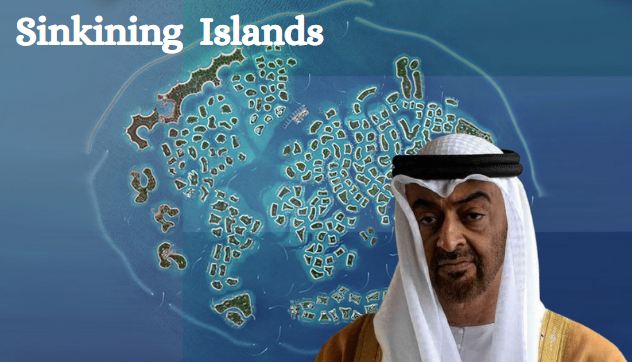The Emiratis had a lot of money by the early 2000s, without much idea where to put it. Of course, they could funnel money into Dubai’s booming real estate. But there is a limit to the number of skyscrapers and towers that you can build and Dubai’s coast was already dotted with property development. And then one fine day, the UAE government thought- let’s just construct townships in the ocean.
The Palm Islands project:
Nakheel Properties, a real estate company owned by the government of Dubai, decided to change the way property is developed.
With the coastline in Dubai not offering much vacant land, Nakheel Properties decided to construct entire townships in seawater. Between 2001 and 2006, the Dubai government-owned company announced several plans.
The first plan was to build the Palm Islands- an archipelago of three islands called Palm Jumeirah, Palm Jebel Ali and lastly Palm Deira, which was planned to be the largest amongst all.
Then, there were some additional projects- “The World”, an archipelago of 300 artificial islands built to represent the different countries and regions. In the next phase, Nakheel Properties planned “The Universe”, which would well represent the Universe. And lastly, it wanted to bring in Islam, because it was an Arab project after all.
So, just next to Palm Jebel Ali, Nakheel properties wanted to build the Dubai Waterfront, formed like a star and a crescent- a central symbol in Islam. And you do realise that these projects were to be built like actual islands that will have people living on them.
The project was unsurprisingly marketed as the largest man-made project in the world.
Global Financial crisis played spoilsport:
The Palm Islands project was going to challenge nature. In 2001, Nakheel Properties started building Palm Jumeirah, spread over 5km². It created 560 hectares of artificial land and added 78.6km to Dubai’s 72km coastline. Amazing right? Well, all the mega-structures that had been planned were estimated to extend Dubai’s coastline to 1,500 km.
Projects were initially going as planned. Land reclamation was completed for Palm Jumeirah by 2006, and the first apartments were handed over. But with the 2008 global financial crisis hitting the UAE, Palm Jebel Ali and Palm Deira had to be put on hold. Originally planned to be built over 46.35 km², the Palm Deira project has been rebranded as just the Deria with four smaller artificial islands housing around 5,000 shops and cafes.
Nakheel Properties has been unable to Palm Jebel Ali financially and has reported that it is a “long-term” project, which shall be “revisited at some point in the future.”
“The World” is sinking:
The global financial crisis was painful for Dubai, but there is the worst to come. Construction on the project started 17 years ago. $13 billion were spent on “the World” and after land reclamation was completed, a large part of the islands was sold before the financial crisis. Then the financial crisis happened and you know it all got stuck up.
But then, after the crisis there have been numerous plans to relaunch the project, but the market is not the only problem. In 2010, marine company Penguin Marine issued a warning- “the World” is sinking back into the sea. All the sand extracted from the seabed to support the 300 islands slowly started returning to its place of origin. In February 2010, the International Space Station warned that water levels in the Persian Gulf were rising and the islands were starting to disappear.
In fact, according to information as per NASA, Palm Jumeirah too was sinking at the rate of five millimetres per year.
And with changing climate, the Abu Dhabi Environment Agency warns that sea levels could rise by 9 metres in the worst-case scenario. The artificial islands built by the UAE are surrounded by a giant wave breaker, but it is only 2 metres above sea level. So, you can imagine what can happen to these islands even if sea levels rise a little less than the worst-case scenario.
At the end of the day, the $13 billion invested in “the World” by the UAE are sinking and sinking fast, making it one of the biggest real estates fails in the modern era.
